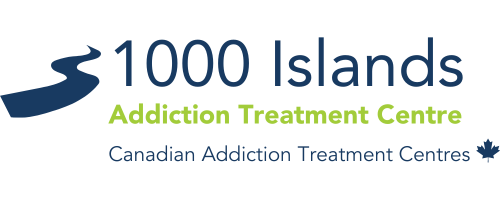
What To Expect During Inhalant Withdrawal And Detox
Inhalant withdrawal and detox is a complicated process. But it’s a crucial step in the path to recovery from inhalant addiction. If those at risk are not shown how to quit inhalant addiction, they are at a significant risk of becoming addicted to other, potentially more harmful substances at some point during their adulthood.
Substance abuse does not always start with an illegal street drug like cocaine or heroin, or with a prescription medication like an antidepressant or an opioid painkiller. Some substances of abuse are lurking in almost every home, masquerading as harmless everyday products.
Because these products are inexpensive, widely available, and can be purchased without restriction, they tend to be the number one choice for children and teens who are looking for an artificially induced escape from the stresses of their lives.
What Is An Inhalant?
Inhalants are substances often found in household products that vaporize at room temperature. When ingested, they generate effects similar to those produced by alcohol.
These effects are evident within a concise time of ingestion, and while they tend to be short-lived, they are intense enough for many users to seek more of the product immediately. Users can experience a variety of unpleasant and dangerous inhalant withdrawal symptoms, which makes it a difficult addiction to overcome.
What Substances Are Considered To Be Inhalants?
Almost all household cleaning products can be used as inhalants. The categories of inhalants are listed below, along with some examples.
- Solvents: glue, nail polish and nail polish remover, felt-tip markers, lighter fluid, paint thinners, correction fluid
- Gases: propane tanks, butane lighters, whipped cream dispensers, chloroform, freon
- Aerosols: hair spray, aerosol deodorant, cooking spray, spray paint
- Nitrites: room deodorizer, leather cleaner, liquid aroma, video head cleaner
What Are The Effects Of Inhalant Abuse?
For some people, the symptoms that come with inhalant withdrawal and detox can be a stumbling block to the process.
However, without inhalant addiction treatment, you are open to a host of side effects and unwanted health problems. These include:
Ingestion Dangers
Some of the dangerous effects of inhalants are related to the method of ingestion. These substances can be taken in a variety of ways.
- Sniffing involves holding the substance near the nose and inhaling it. This can result in nasal damage resulting from chemical burns and inflammation.
- Bagging is done by spraying an aerosol substance into a plastic bag and placing the bag over the mouth or the head. People who do this are at risk of oxygen deprivation and suffocation.
- Huffing is when a rag is soaked in the substance and then placed over the nose or in the mouth. This method carries a high risk of suffocation and asphyxiation.
Substance Dangers
Like inhalant withdrawal symptoms, the effects of inhalants vary depending on what the substance is, as well as individual factors like age, existence of physical or mental health conditions, whether medications are being used, and how much of the substance is ingested and with what frequency.
Every use of inhalants can produce the following effects:
- Impaired motor functioning, poor reflexes, and loss of coordination
- Impaired judgment and a loss of self-control
- Short-lived euphoria
- A state of excitability
- Slurred speech
- Dizziness and lightheadedness
- Hallucinations
- Nausea and vomiting
- Loss of consciousness
- Heart failure that may lead to death
Regular long-term use of inhalants can result in damage to the liver and kidneys, sustained loss of coordination, neurological damage, behavioural problems, and brain damage.
Related article: Why You Should Not Attempt Alcohol Withdrawal At Home
What Is Inhalant Addiction Withdrawal?
Inhalant withdrawal symptoms are generally mild compared to withdrawal from other substances, but in some cases – mostly when the inhalants are used in conjunction with other substances like alcohol or marijuana – the person can be at risk of serious complications.
Inhalants produce effects of euphoria and confidence that, while being intense, are fairly short-lived. When these effects wear off, the user may feel the urge to use the substance again. The more they use it, the more they have to take to achieve the same effects. If at some point they decide to stop using inhalants, or if they are denied access to the substances, their body goes through withdrawal.
Some of the more common symptoms of inhalant withdrawal include the following:
- Nausea and vomiting
- Headaches and dizziness
- Anxiety and depression
- Symptoms of psychosis, such as delusions, paranoia and hallucinations
- Insomnia
- Rapid or irregular heartbeat
- Irritability, agitation, outburst of anger, and rapid mood swings
- Impaired memory and concentration
- Hand tremors
- Sweating significantly more than usual
- In severe cases, seizures may occur
Inhalant Withdrawal Timeline: How Long is It?
In general, inhalant withdrawal symptoms appear within two days of the last use, and they last for up to one week. However, some individuals experience a phenomenon known as post-acute withdrawal syndrome, or PAWS. This is characterized by cravings, depression, and other psychological symptoms, and which can last for up to two years.
Inhalant withdrawal follows a timeline. Hence, symptoms appear at different points in time while the substance is working its way out of the system. The timetable differs slightly for everyone, based on factors like their age and physical sex, their medical history, what substances were used and in what quantities, and their body weight.
For most people, the inhalant withdrawal timeline looks something like this:
- The first two days: Physical symptoms such as tremors, vomiting, sweating, and headaches occur. While psychological symptoms such as anxiety and cravings may also be present, this initial phase is dominated by the physical symptoms.
- The first week: After about two days, the physical withdrawal symptoms start to fade, and psychological symptoms become prevalent. These include depression, anxiety and mood swings.
- Second week and beyond: For several weeks, what symptoms remain will gradually fade until they are gone. For most individuals, this will take no more than about one month, but PAWS is a possibility that should be monitored for.
What Is Inhalant Detox?
Medical detox is a process whereby inhalant addicts are placed under the supervision of one or more medical professionals during withdrawal. The primary focus is to ensure that the individual is safe and as comfortable as possible while the substance is making its way out of the system, and to treat withdrawal symptoms if and when they arise. Medical detox serves several purposes:
- Proper medical care, including nutrition, helps the individual’s body recover from the ravages of substance abuse
- It gets the individual into a recovery frame of mind, allowing for a smooth transition into rehab
- It protects the individual during a time when their risk of relapse is at its highest
Many inpatient addiction rehab centres have an on-site inhalant detox centre, which makes it easy for addiction rehab to begin as soon as the detox phase is over.
Inhalant Addiction Treatment
One of the tragedies about inhalant addiction is that it strikes people who are very young. In many cases, children and teenagers are driven to substance abuse by stressful circumstances in their lives, such as bullying, peer pressure, family difficulties and more. Unfortunately, not all young people have access to trusted adults who can help them through their troubles and guide them toward healthy coping mechanisms.
If children and teens are not shown how to quit inhalant addiction during their youth, they are susceptible to long-term addiction problems throughout their adult lives.
At 1000 Islands Addiction Rehab & Treatment Centre, we provide inpatient inhalant addiction treatment to people of all ages. Our treatment programs are customized to the individual, based on their unique needs and circumstances. We do not believe in treating the addiction: we treat the individual as a whole. We help them explore difficult areas of their lives. We help them discover new, healthier ways of coping with stress, and we set our clients up for a lifetime of happiness, success, and sobriety.
For more information about our addiction treatment services and how they can help you or your loved one overcome an addiction to inhalants, call us today at 855-601-0555.
Related article: Inhalant Addiction: The Signs You Need Help





